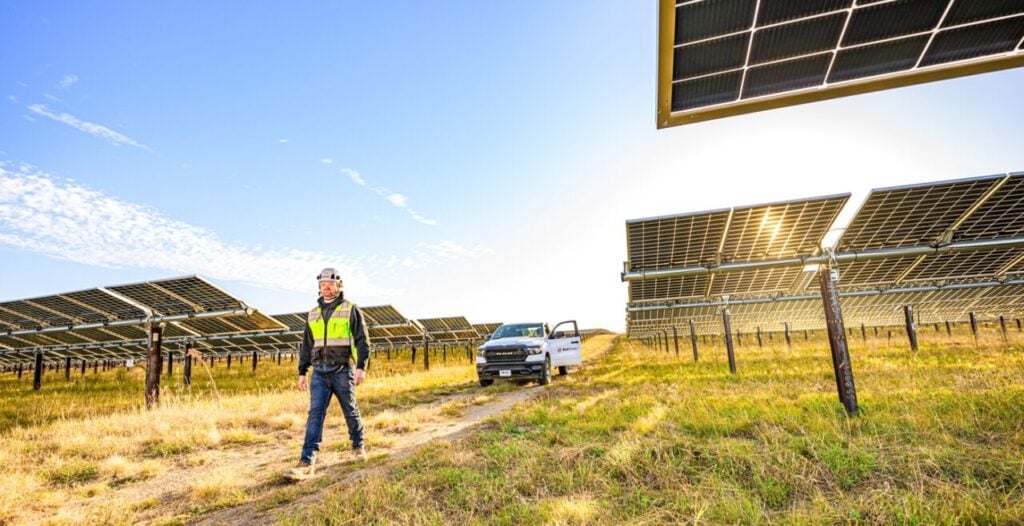
The Colorado Public Utilities Commission (PUC) has voted to require local utility Xcel Energy to provide higher-quality data on the electricity transmission infrastructure it uses in the state, and introduce a flexible tariff for developers looking to connect renewable energy projects to the grid, which aim to reduce grid connection costs.
The vote was completed on 29 October, and the decision announced today, ahead of a full release of the hearing. The first vote was in favour of Xcel making publicly available its hosting capacity analysis (HCA), a tool used to show conditions on an electric grid that affect how and where new electricity generation facilities can be added to the grid while miniming disruption.
Try Premium for just $1
- Full premium access for the first month at only $1
- Converts to an annual rate after 30 days unless cancelled
- Cancel anytime during the trial period
Premium Benefits
- Expert industry analysis and interviews
- Digital access to PV Tech Power journal
- Exclusive event discounts
Or get the full Premium subscription right away
Or continue reading this article for free
Xcel was first directed to use ratepayer funds to develop an HCA in 2021, but the Interstate Renewable Energy Council (IREC), an independent non-profit organisation working to advance clean energy, reports that the data has been “plagued with issues that hinder its use” in the years since.
This includes not presenting sufficient data to users to make project siting decisions, and forcing developers to sign what the Colorado PUC called a “commercially unreasonable” non-disclosure agreement to access the full dataset, IREC said.
Xcel argued that withholding the data is important to protect the security of the electricity grid, but the PUC rejected this argument and voted that the utility will publish “unredacted data” without users having to sign an NDA.
“[The current level of detail] is like being told there’s traffic on Interstate 55 somewhere between Chicago and St. Louis. It’s vague and not very useful,” explained IREC regulatory engineer Midhat Mafazy. “Developers need more granular data that pinpoints where constraints are and why congestion is happening. These improvements will make the data massively more useful for deploying clean energy and EV charging infrastructure, and smarter grid planning overall.”
Marcel Suri, CEO of Slovakian software firm Solaris, has written for PV Tech frequently about the importance of collecting and using high-quality data to better inform decision-making in the renewable energy space.
Flexible interconnections for growing renewable electricity generation
The PUC also voted in favour of Xcel developing a policy for “flexible interconnection and energisation,” a system by which operators of electricity generating facilities are able to change the volume of electricity they export to the grid in response to the supply and demand of electricity, and be compensated for that volume of electricity. The commission argued that Xcel’s current policy framework was “very limited” and “had no concrete plans for a flexible load”.
While IREC and the PUC’s comments in this vote do not make reference to particular technology types, a better framework for flexible tariffs is likely to benefit renewable energy projects, which produce electricity at more variable times than fossil fuel projects.
This is particularly significant for solar power, where the oft-discussed ‘duck curve’—the phenomenon whereby solar projects are most productive during the day, but electricity demand is often highest at night—can lead to a mismatch between electricity supply and demand, leading to a lack of electricity to meet demand at best, and widespread curtailment at worst.
Curtailment is the process of turning off a renewable power project during times of high supply and low demand, to avoid receiving low, or even negative, prices for exporting power to a grid. A number of markets in the US and around the world have struggled with curtailment in recent years, including California, Chile and Australia, and effectively expanding and improving grid capacity is often considered a key method of minimising this issue.
Financial mechanisms, such as flexible tariffs for grids where renewable energy is an increasingly integral part of meeting energy demand, can also minimise the financial cost of a mismatch between electricity supply and demand.
This could be particularly significant for Xcel in Colorado in particular, where the utility has sought to significantly increase the contribution of renewable energy in its total mix in recent years. Between 2005 and 2024, the contribution of wind power to the utility’s customers’ energy mixes has increased from 2% to 35%, and Excel expects this to increase to 62% by the end of the decade.
Colorado also ranks sixth in the US for wind generation, and tenth in the nation for solar generation, so better integrating these energy sources into grid function are essential parts of energy management.






